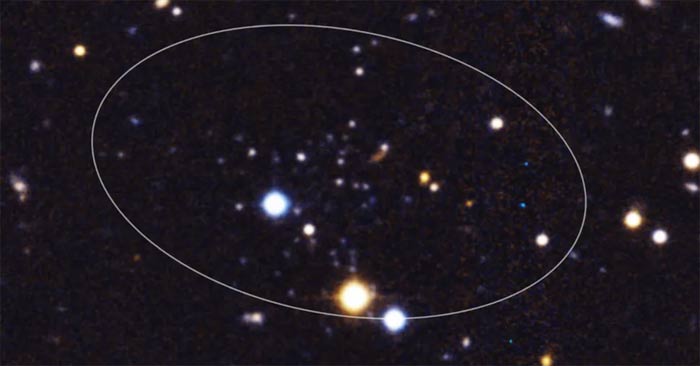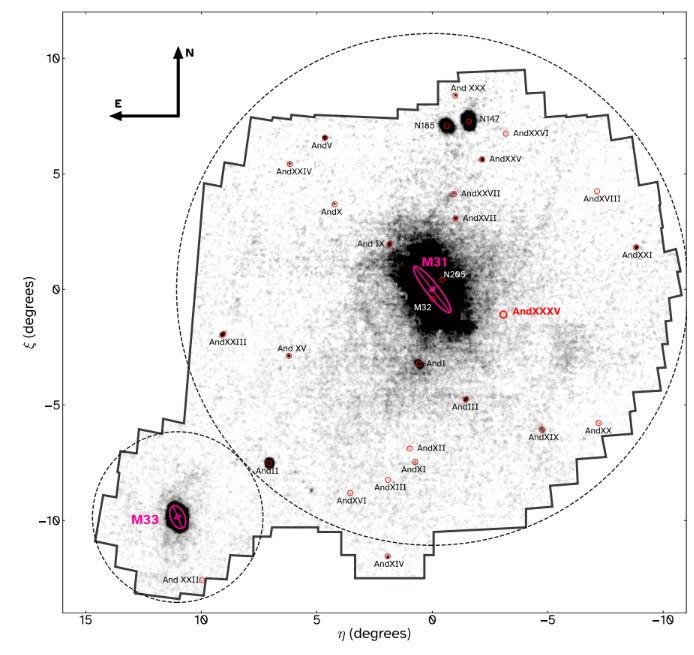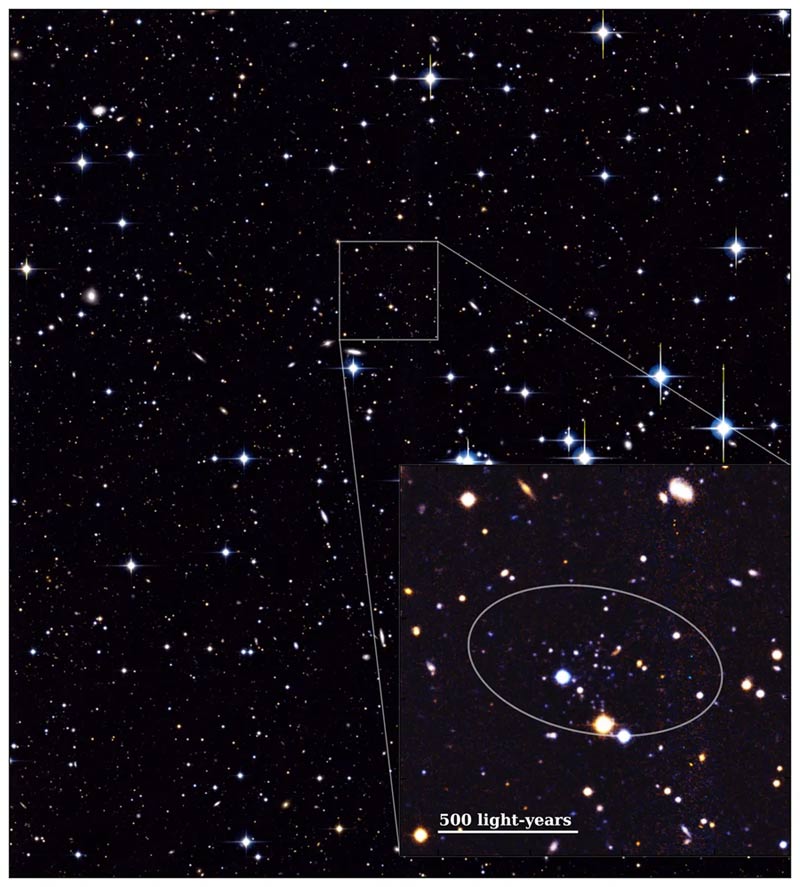Smallest galaxy ever discovered: Like a human but only the size of a grain of rice
Astronomers have discovered a collection of small galaxies located about 3 million light-years away, including the smallest and faintest galaxy ever seen.

This galaxy, called Andromeda XXXV , and its companion galaxies orbiting Earth's neighboring galaxy, Andromeda, could change the way we think about the evolution of the universe.
That's because dwarf galaxies this small should have been destroyed in the hotter, denser conditions of the early universe. Yet somehow this tiny galaxy survived without being burned up.
' These are fully functional galaxies, but they are only about a millionth the size of the Milky Way ,' team member and University of Michigan professor Eric Bell said in a statement. ' It's like a perfectly normal human being, but only the size of a grain of rice .'
"Meet" Andromeda XXXV
Dwarf galaxies themselves are nothing new to scientists. Our own galaxy, the Milky Way, is orbited by dozens of these satellite galaxies, trapped in the clutches of its larger galaxies.
However, there is a lot that scientists don't know about dwarf galaxies. This is because they are much smaller & dimmer than larger galaxies. This makes them difficult to detect, and even more difficult to study at great distances.
Although astronomers have been able to identify many dwarf galaxies orbiting the Milky Way, identifying dwarf galaxies around our bright neighboring galaxy has been extremely difficult. This means that the Milky Way's dwarf galaxies are the only available source of information about small satellite galaxies.
This mission is a little less challenging around the nearest large galaxy to the Milky Way, Andromeda. Other dwarf galaxies have been discovered around Andromeda before, but they are large & bright, so it just needs to confirm the information astronomers have gathered about dwarf galaxies around the Milky Way.
To discover the smaller, fainter dwarf galaxies that are changing this pattern, team leader Marcos Arias, an astronomer at the University of Michigan, and his colleagues searched through massive astronomical data sets. The team also used the Hubble Space Telescope to aid in their search.
This shows that Andromeda XXXV is not just a satellite galaxy, but is small enough to change theories about how galaxies evolve.
'It's really surprising,' Bell said . 'It's the most obscure thing you'll find around, so it's just a neat system. But it's also surprising in a lot of other ways.'

A Mystery of Murder in the Universe
One of the key aspects of galaxy evolution is how long it takes for stars to form. This appears to be the biggest difference between the Milky Way's dwarf galaxies and Andromeda's smaller satellite galaxies.
' Most of the Milky Way's satellites have very ancient stellar populations. They stopped forming stars about 10 billion years ago ,' Arias explains. ' What we see are similar satellites in Andromeda, which probably formed stars a few billion years ago—about 6 billion years ago .'
Star formation requires a steady supply of gas and dust to collapse and produce stellar bodies. When that gas is gone, star formation stops and the galaxy 'dies.' Bell has thus described the situation surrounding these small galaxies as a 'murder mystery.' Does star formation end when the dwarf galaxies' gas supply runs out on its own, or when the gas is stripped away by the gravity of a larger galaxy?
In the case of the Milky Way, it appears that the gas for star formation has run out on its own; however, for the smaller galaxies around Andromeda, it appears that they have been "killed" by their parent galaxy.
'It seems puzzling, but either they fell or they were pushed? These galaxies appear to have been pushed,' Bell said . 'That gives us a new qualitative lesson about how galaxies form from them.'
What's even more strange is Andromeda XXXV's long star formation period. To understand why, we need to go back in time to when the first galaxy was born.
Why Andromeda XXXV is not a "burned up" galaxy
The first era of the universe was marked by extremely hot conditions. This inflationary period, which began with the Big Bang, continued to grow, and the universe dispersed and cooled. This allowed the first hydrogen atoms to form, giving rise to the first stars, which gathered in the first galaxies.
These stars and galaxies emitted energy similar to the first black holes that reheated the universe. This signaled the death of very small galaxies. Scientists hypothesize that this heat 'melted' the gas needed for star formation in such stellar clusters.
Yet somehow, Andromeda XXXV still exists!

NASA and other space agencies are planning to explore more dwarf galaxies around other large galaxies and help solve this mystery. But there's a good chance the solution will open up new questions like the discovery of Andromeda XXXV.
' We still have a lot to discover ,' Arias said. ' There is so much we still need to learn—even close to us—about galaxy formation, evolution, and structure before we can reverse-engineer the history of the universe and understand how we got to where we are today .'
The team's research was published Tuesday (March 11) in the Astrophysical Journal Letters.
You should read it
- How to compress the smallest file size with WinRAR
- 9 amazing facts about the universe amaze you
- World's smallest SSD launched with almost unimaginable size
- Check the durability of the smallest phone in the world and unexpected results
- Galaxy S11 5G officially appeared on Geekbench with impressive specifications
- Discover the smallest star in the universe, about 600 light-years from Earth
 What exactly is a meteor shower?
What exactly is a meteor shower? How do astronauts breathe in space?
How do astronauts breathe in space? Water in the Universe May Have Formed Closer to the Big Bang Than Previously Thought
Water in the Universe May Have Formed Closer to the Big Bang Than Previously Thought Dark Energy: New Discovery Turns Our Understanding of the Universe Into Over
Dark Energy: New Discovery Turns Our Understanding of the Universe Into Over The most distant galaxy ever discovered holds amazing secrets
The most distant galaxy ever discovered holds amazing secrets Traces of a meteorite impact that shook the Earth 600 million years ago have been found
Traces of a meteorite impact that shook the Earth 600 million years ago have been found